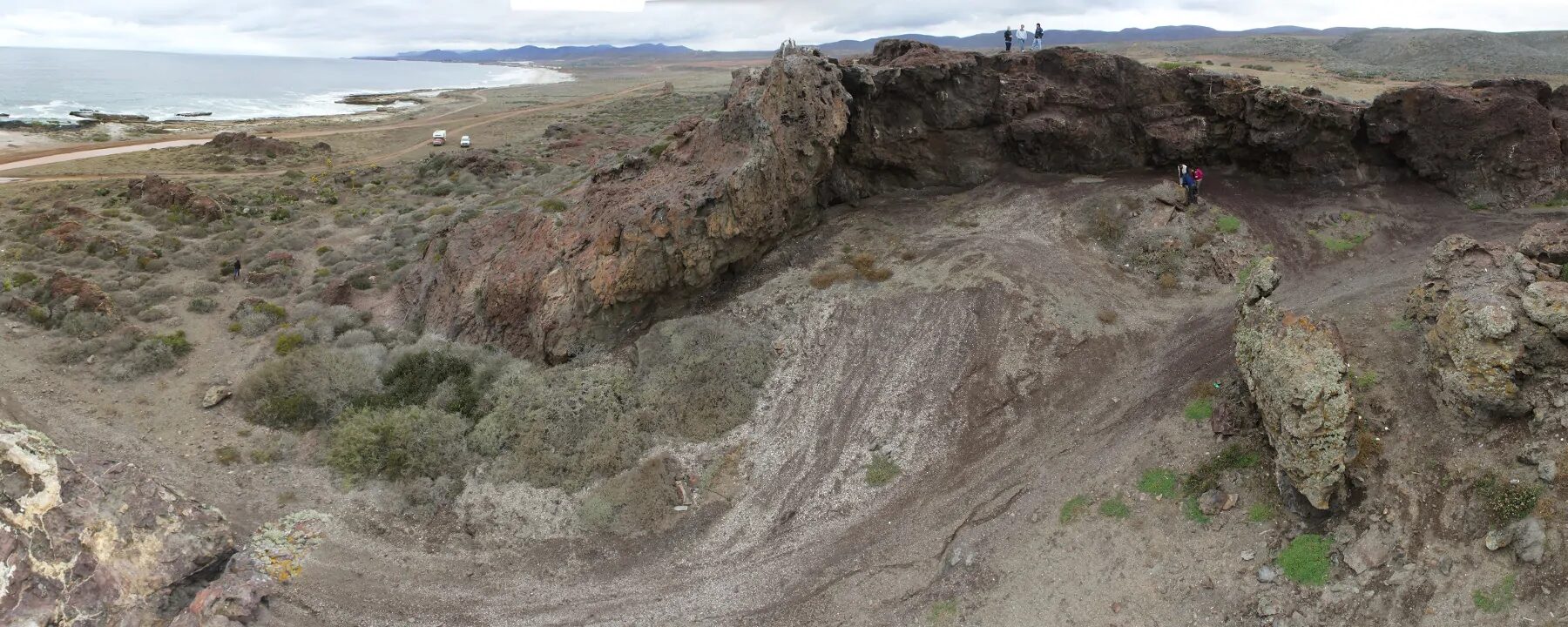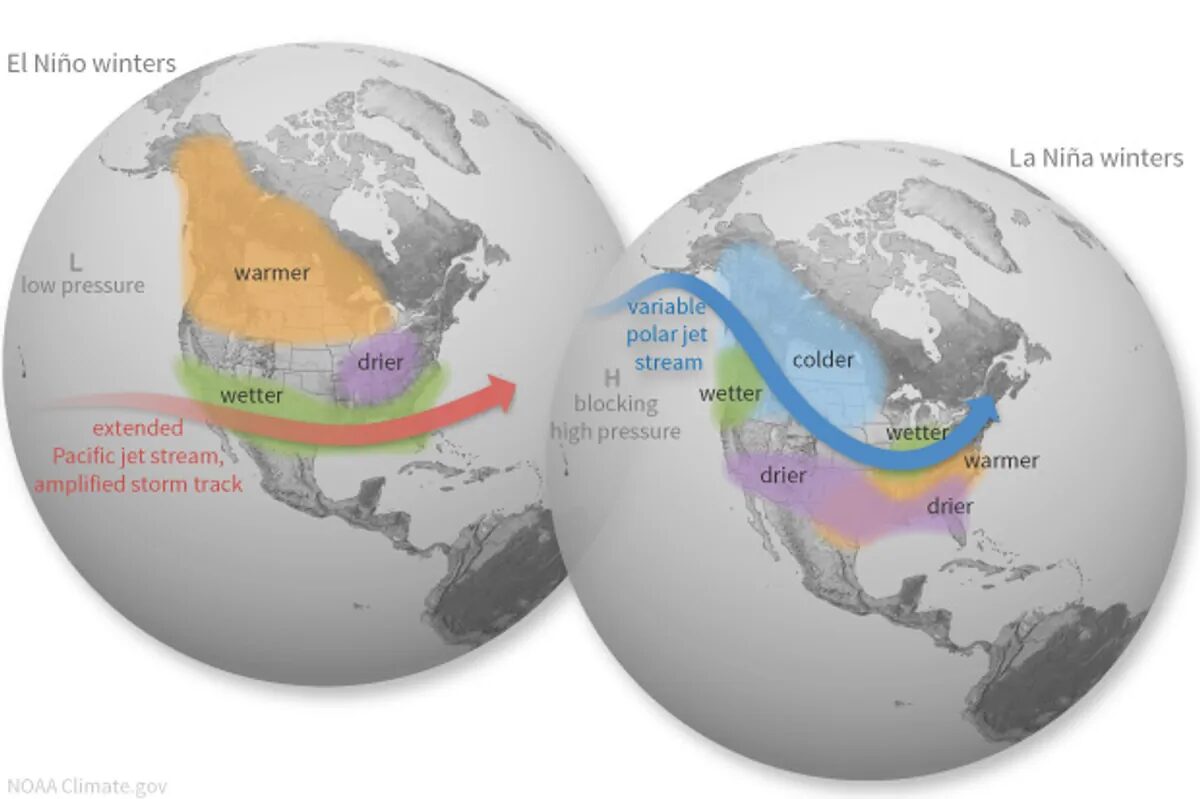
In a study published September 8 in Science, the team used animal fossils and human artifacts from the past 12,000 years to identify an "ecological tipping point" of five moderate-to-strong El Niño events in eastern coastal ecosystems — that is, after five such El Niño events within a century, populations of marine and terrestrial birds and marine fishes began to shift.
The El Niño-Southern Oscillation (ENSO) is a recurring climate pattern made up of three cycles: El Niño, La Niña and ENSO neutral. During an El Niño event, east-to-west trade winds weaken or reverse, waters in the central and eastern tropical Pacific Ocean heat up, and this area sees increased rainfall. Globally, El Niño usually results in higher than average temperatures and a less active hurricane season in the Atlantic. Off the coast of Baja California, El Niño decreases nutrient upwelling, reduces marine biomass and increases precipitation, write anthropologist Daniel Sandweiss and climate scientist Kirk Maasch in a perspective article about the study.
In contrast, La Niña usually causes lower than average temperatures across the world and cooler ocean temperatures in the central and eastern tropical Pacific. During La Niña, the easterly winds along the equator blow faster and hurricanes become stronger and more frequent in the Atlantic.
Because of the effects of El Niño on ocean temperatures and rainfall, study coauthor Jack Broughton, an anthropologist at the University of Utah, hypothesized that some animals — terrestrial birds such as quails and meadowlarks — would thrive more under El Niño conditions, while marine birds would suffer. Similarly, populations of fishes that do well in colder water, like kelp bass and rockfish, would likely decline during El Niño events, while fishes that prefer warmer water or can live under varying conditions would increase.
To test this idea, the team identified 18,623 specimens that had been excavated from a site called Abrigo de los Escorpiones in Baja California, Mexico, matching each tiny bone fragment to a reference collection of all known species in the area. The work was laborious — researchers began the process 14 years ago, in 2008.
"This is a very large collection . . . which is great, but time consuming nonetheless," Broughton says.
Broughton and his colleagues grouped the bones into 100-year time periods based on radiocarbon dating. They compared these groups to sediment records from Lake Pallcacocha in Ecuador, which correlate with moderate-to-extreme El Niño events, though their reliability has been debated.
"When it rains, heavy rains, there's a lot of erosion," says Broughton. "And it brings in a lot of sediment into the bottom of [Lake Pallcacocha]. That's been going on for 12,000 years, and previous researchers had studied that and determined that the thickness of the layers correspond to major El Niño events."
The lake's record shows a near absence of El Niño events between 11,000 and 7,000 years ago, during the early Holocene. An increase in frequency occurs sometime between 7,000 and 5,000 years ago and continues until 1,200 years ago, when it begins to decline. The lake does not record weak El Niño events, however.
Statistical tests showed that the animal populations did follow the expected pattern, restructuring after five El Niños occurred within 100 years. During these strong El Niño periods, environments were more stable than during other times but the relative numbers of marine birds and fishes sensitive to El Niño fell, while terrestrial birds thrived. And while other climatic processes influenced this ecosystem during periods of fewer El Niños, the largest effect during 100-year periods containing at least five El Niño events was those events, the researchers found.
"It was really rewarding when we finally got the really striking pattern with the threshold," Broughton says. "And it has so many implications for not only the past, but even environments looking forward."
Early humans would also have been affected by these events, as foragers would have been able to rely more on marine food sources in periods with fewer El Niño events, Broughton says. The team conducted artifact counts in Baja California that indicate humans spent more time at the site before El Niño frequency exceeded the tipping point about 7,000 years ago.
Broughton says these findings are consistent with the kelp highway hypothesis — the idea that humans first arrived in the Americas by boat and migrated south along the coast of South America, surviving on abundant fishes and marine mammals in kelp forests. Because the team's research found that extreme El Niño events did not happen during the time this is thought to have occured — around the end of the Pleistocene and early Holocene — marine habitats would have been bountiful.
To confirm their findings, the researchers performed computational analyses that searched for population size patterns in all the species they collected samples of, not just the ones they hypothesized would be affected by El Niño events. They found the pattern they identified for the species they'd deemed most likely to be affected by El Niño held true for the entire assemblage.
Pedro DiNezio, a climate scientist who studies El Niño and La Niña events at the University of Colorado Boulder, says that while the research is "intriguing," they're skeptical that the changes in the fossils found at the site can be explained solely by El Niño events.
"So many things changed over this interval, and the authors are linking what they see to just one thing," they say. "Six thousand, eight thousand years before present, when the authors detect these large changes in these ecosystems, summers received a lot more sunlight because of changes in the Earth's orbit. And that made monsoons stronger in the Northern Hemisphere. We're pretty sure about that."
Broughton agrees that "many other climate systems and processes have played important roles in influencing past ecosystems," he says, and when the ENSO system was quiet, these processes were key drivers of changes they observed.
"However, when El Niño frequencies exceeded the tipping point of five per century, the faunal communities invariably shifted states," he says.
DiNezio also doubts that the sediment core from Lake Pallcacocha in Ecuador is a reliable way to measure El Niño events. "That record has been questioned over the last 20 years as not being an exact proxy for ENSO," they say. "Our community has not settled on an answer for what that record means."
The authors write in their paper that while the Pallcacocha record has been scrutinized, recent modeling work and comparison with fossil rabbit bones indicate it does reflect El Niño trends.
Carrie Tyler, a paleoecologist at the University of Nevada, Las Vegas, says the five-event tipping point is "alarming" given current climate trends, and that understanding these thresholds can help with management and preservation of ecosystems.
"What we need to know is how fast ecosystems recover, if they can recover" from extreme El Niño events, she says. "And to recognize the importance of this kind of event, because it's an additional stressor on top of stresses that ecosystems are already experiencing."




Comment: They're right to be skeptical that El Nino is solely to blame for these shifts and swings, however it's possible that the shifts driving El Nino is responisble for the other, and more, processes, effecting life on our planet: The Seven Destructive Earth Passes of Comet Venus